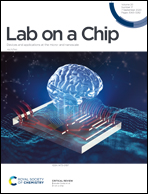AI on a chip
Abstract
Artificial intelligence (AI) has dramatically changed the landscape of science, industry, defence, and medicine in the last several years. Supported by considerably enhanced computational power and cloud storage, the field of AI has shifted from mostly theoretical studies in the discipline of computer science to diverse real-life applications such as drug design, material discovery, speech recognition, self-driving cars, advertising, finance, medical imaging, and astronomical observation, where AI-produced outcomes have been proven to be comparable or even superior to the performance of human experts. In these applications, what is essentially important for the development of AI is the data needed for machine learning. Despite its prominent importance, the very first process of the AI development, namely data collection and data preparation, is typically the most laborious task and is often a limiting factor of constructing functional AI algorithms. Lab-on-a-chip technology, in particular microfluidics, is a powerful platform for both the construction and implementation of AI in a large-scale, cost-effective, high-throughput, automated, and multiplexed manner, thereby overcoming the above bottleneck. On this platform, high-throughput imaging is a critical tool as it can generate high-content information (e.g., size, shape, structure, composition, interaction) of objects on a large scale. High-throughput imaging can also be paired with sorting and DNA/RNA sequencing to conduct a massive survey of phenotype–genotype relations whose data is too complex to analyze with traditional computational tools, but is analyzable with the power of AI. In addition to its function as a data provider, lab-on-a-chip technology can also be employed to implement the developed AI for accurate identification, characterization, classification, and prediction of objects in mixed, heterogeneous, or unknown samples. In this review article, motivated by the excellent synergy between AI and lab-on-a-chip technology, we outline fundamental elements, recent advances, future challenges, and emerging opportunities of AI with lab-on-a-chip technology or “AI on a chip” for short.



 Please wait while we load your content...
Please wait while we load your content...